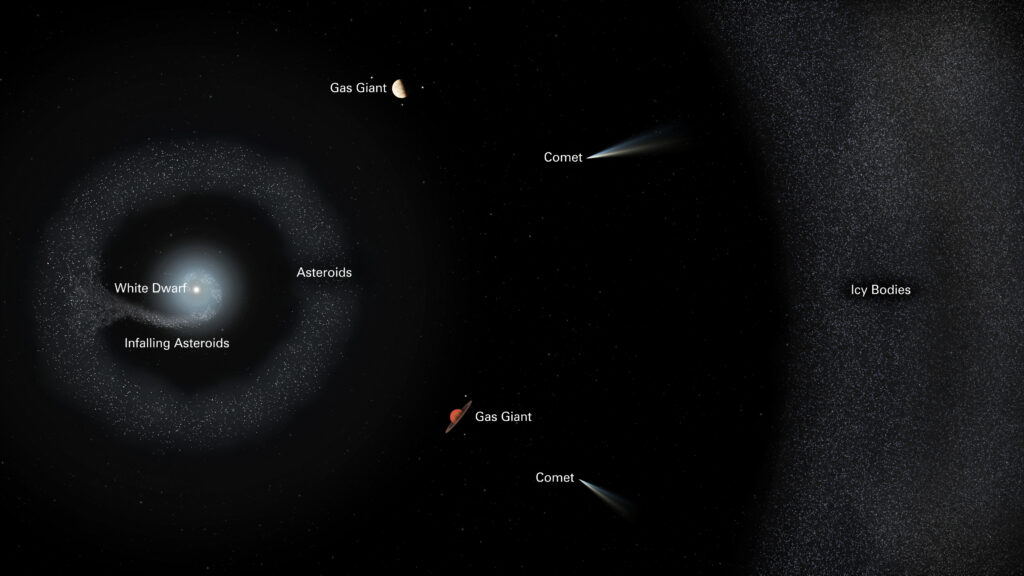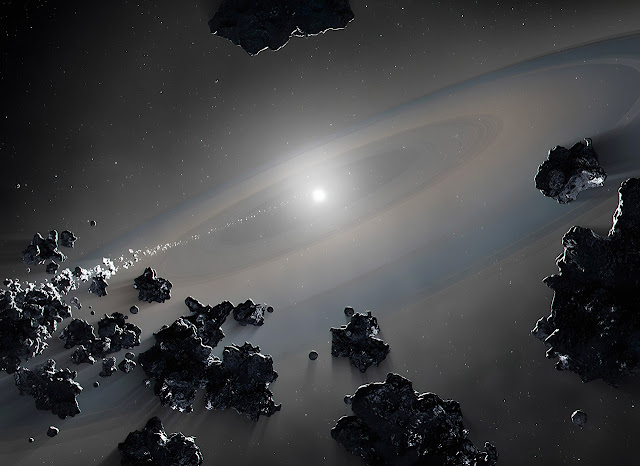Astronomers capture the dying star’s last act as it destroys all of its planets in “Cosmic Cannibalism”
White dwarfs that go wild cause absolute mayhem on their worlds. The evidence first appears in and around the dying star’s atmosphere much later after being confirmed as planetary and cometary debris.
This is the conclusion that a group of UCLA astronomers came at after doing a thorough analysis of the nearby white dwarf G238-44. A case of cosmic cannibalism was found at this faint star, located 86 light-years from Earth.
The planets, asteroids, and comets of the Kiper Belt would collide with this star if it were in the position of the S. Measuring all the planets from Mercury to Neptune, this star would have cosmed them all. Due to the extensive spread, this cannibalism crime is one of the most notorious in recorded history.

Illustration Credits: NASA, ESA, Joseph Olmsted (STScI)
Ted Johso, a UCLA graduate in physics and astronomy and the study’s principal author, claimed that the simultaneous collision of these two objects with a white dwarf was the first time he had ever witnessed. We intend to gain a better understanding of still-active planetary systems by studying these white dwarfs.
Johso was part of a team from UCLA, UC San Diego, and the University of Kiel in Germany that studied the chemical elements that make up white dwarfs’ atmospheres. Data were gathered using the Hubble Space Telescope’s Cosmic Origins Spectrograph, Space Telescope Imagig Spectrograph, the Keck Observatory’s High-Resolution Echelle Spectrometer in Hawaii, and the NASA’s Defct Far Ultraviolet Spectroscopic Explorer. The researchers measured and found many elements, including itroge, oxyge, magesium, silico, and iro.
Iro is particularly interesting because it creates the cores of rocky planets like Earth and Mars. Its existence indicates that G238-44 was once orbited by pieces of a terrestrial composition. High levels of “itroge” indicate the presence of an ice corpse pool in the system.
White dwarfs, which are the scorched cores of ancient stars like the S, are left behind when they get older and older. These stellar remnants gradually cool down over countless years. However, the actual dying throes may be violent and unpleasant prior to this time. They appeared to have pits surrounding them. It is concerning for the future of our solar system that “remaats” of these planets, comets, and asteroids have been found in G238-44 atmosphere.
A star’s death throes have so violently disrupted its planetary system that the dead star left behind, called a white dwarf, is siphoning off debris from both the system’s inner and outer reaches. This is the first time astronomers have observed a white dwarf star that is consuming both rocky-metallic and icy material, the ingredients of planets.
Archival data from NASA’s Hubble Space Telescope and other NASA observatories were essential in diagnosing this case of cosmic cannibalism. The findings help describe the violent nature of evolved planetary systems and can tell astronomers about the makeup of newly forming systems.
Source:NASA
Do not forget to share your opinion with us to provide you with the best posts !





0 Comments